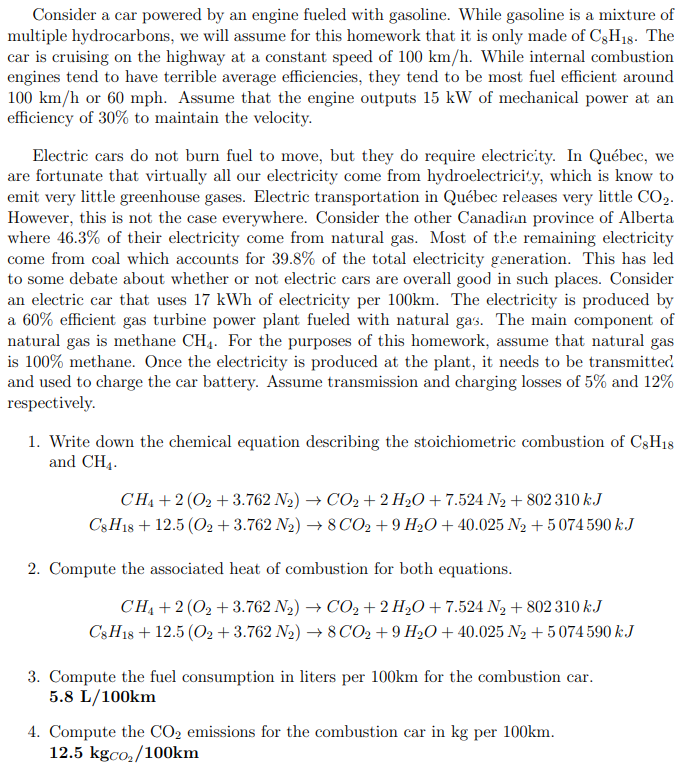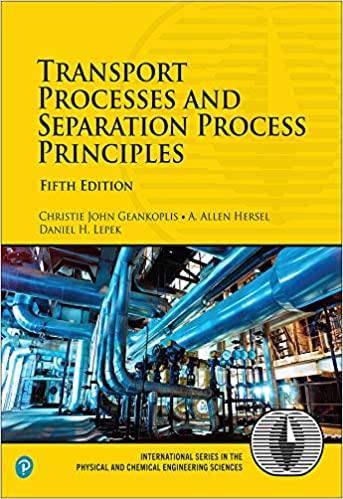THE ANSWERS ARE GIVEN BELOW.. I JUST WANT TO SEE HOW YOU GET TO THEM. THANK YOU

Consider a car powered by an engine fueled with gasoline. While gasoline is a mixture of multiple hydrocarbons, we will assume for this homework that it is only made of C,H18. The car is cruising on the highway at a constant speed of 100 km/h. While internal combustion engines tend to have terrible average efficiencies, they tend to be most fuel efficient around 100 km/h or 60 mph. Assume that the engine outputs 15 kW of mechanical power at an efficiency of 30% to maintain the velocity. Electric cars do not burn fuel to move, but they do require electricity. In Qubec, we are fortunate that virtually all our electricity come from hydroelectricity, which is know to emit very little greenhouse gases. Electric transportation in Qubec releases very little CO2. However, this is not the case everywhere. Consider the other Canadian province of Alberta where 46.3% of their electricity come from natural gas. Most of the remaining electricity come from coal which accounts for 39.8% of the total electricity generation. This has led to some debate about whether or not electric cars are overall good in such places. Consider an electric car that uses 17 kWh of electricity per 100km. The electricity is produced by a 60% efficient gas turbine power plant fueled with natural gas. The main component of natural gas is methane CH4. For the purposes of this homework, assume that natural gas is 100% methane. Once the electricity is produced at the plant, it needs to be transmitted and used to charge the car battery. Assume transmission and charging losses of 5% and 12% respectively. 1. Write down the chemical equation describing the stoichiometric combustion of CH18 and CH CH4 + 2 (02 +3.762 N2) + CO2 + 2 H2O + 7.524 N2 + 802 310 kJ C8H18 + 12.5 (02 +3.762 N2) +8C02 + 9 H20 + 40.025 N2 + 5074 590 kJ 2. Compute the associated heat of combustion for both equations. CH4 + 2 (02 +3.762 N + CO2 + 2 H20+ 7.524 N2 +802 310 kJ C8H18 + 12.5 (02 +3.762 N2 + 8 C02 +9 H2O + 40.025 N2 +5074 590 kJ 3. Compute the fuel consumption in liters per 100km for the combustion car. 5.8 L/100km 4. Compute the CO2 emissions for the combustion car in kg per 100km. 12.5 kgco2/100km







